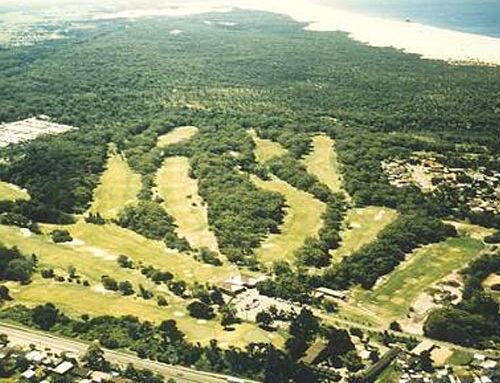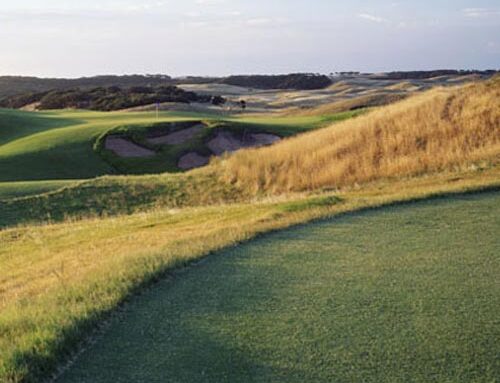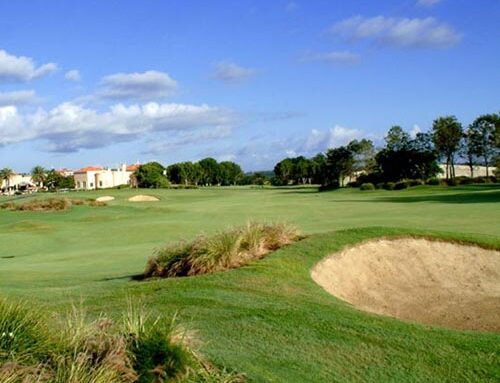Barwon Heads
Victoria, Australia
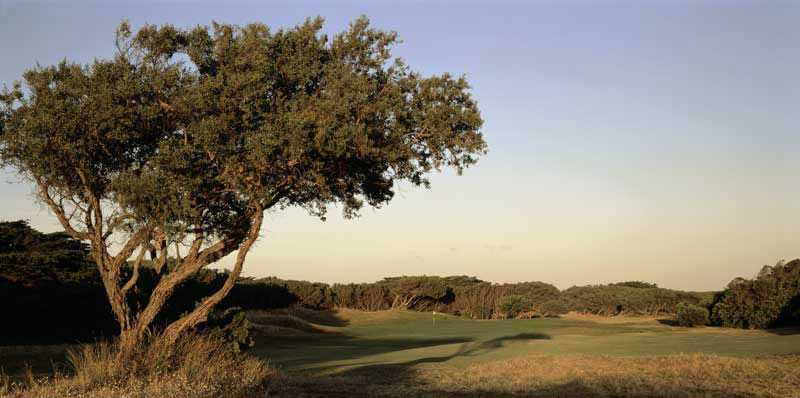
Certain courses conjure images of specific countries. Mention heathland and the golfer thinks of England. Mention parkland and the golfer thinks of the tree-lined fairways in the United States. Mention links and the golfer’s mind wanders to the home of golf.
While justified, these connections are not meant to be conclusive. A parkland course like Little Aston is the better of several (many!) PGA Championship sites. When it comes to links courses, Holland, Belgium, Spain, South Africa, New Zealand, Sweden, and the United States all possess stirring examples. Another such country is Australia – no great surprise really, given its tens of thousands of kilometers of coastline.
At the time of writing, Australia’s finest example of a links course where the ocean can be seen is Barwon Heads, located approximately one and half hours southwest of Melbourne’s famed Sandbelt region.
The course has the best qualities of most links: firm hard fairways that turn a lovely shade of light brown through the hot Australian summers; a course exposed to the full vagaries of the wind; both the sight and sound of the ocean; holes that lay across the land in all sorts of manner; a mostly treeless environment, and finally land blessed with nice pitch and tumble.
The course also suffers some not so desirable yet common links features: greens that are sufficient but not imaginative and bunkers that hinder only the weaker golfer. Victor East, the professional at Royal Melbourne, designed the course in 1920. Undoubtedly, the course would benefit from more sophisticated green complexes but alas that was not East’s wont (MacKenzie had yet to work his magic at RM, which could have influenced East).
These limitations should not deter the travelling golfer, as the overall atmosphere is one of pure delight. For instance, when the first nine is completed, there is no halfway house or drink station for the golfer; but there is a water bowl for your dog. Barwon Heads is that kind of place.

The sandy nature of the site is evident at the one-shot eighth.
Holes to Note
Third hole, 420 yards; One of the country’s finest two shotters. This hole slowly doglegs to the right around a completely natural (and fearsome) sandy/scrubby waste area. The temptation for the long hitter is to carry his tee shot near here as he is looking to shorten his approach up the hill and into the wind with his approach. The conservative carry of approximately 170 yards brings a large bunker on the far side of the fairway into play while the novice can safely avoid all the hazards and comfortably reach the green in three. To see a good player hold the flight of the approach out of the wind by keeping the ball below the height of the hill is a thing of beauty.
Fifth hole, 510 yards; Not a hard hole by any stretch but one that brings joy to all. The elevated tee is the highest point on the course and provides an uninterrupted view down the south coast of Australia with the blue waves perfectly formed. (The golfer is within one hour of Bell’s Beach, one of the world’s renowned surfing spots). The fairway is broad with only one bunker to carry on the direct line to the hole and the trouble on either side is not severe; thus the golfer is encouraged to have ‘a hit.’ The feeling of watching a well struck shot carry the bunker and land on the fairway some forty feet below and bound along is one of great satisfaction. From there, the green should be within reach if the wind is not against. The rub is now realised: the green features the most severe pitch on the course and the golfer best consider from where to be play his third shot. An expansive hole is made much more exacting by a superbly pitched green.
Sixth hole, 370 yards; A hole that epitomises the virtues of links golf, this hole is a three wood approach shot one day and a wedge the next. The tee shot needs to clear a ridge some 210 yards off the tee but into a biting wind, this is no mean feat. If safely on top, the golfer has a good chance to reach the green, which is perched on the far side of another hollow. The green contains some of the boldest contours on the course, making a one putt par rare.
Seventh hole, 410 yards; After the open nature of the first six holes, the seventh tee shot comes as a surprise as a grove of cypress trees encroach in the hitting area some 200-230 yards off the tee. The low lying, wind swept trees give the hole a fine appearance and add to the diversity of the overall challenge. A straight tee shot helps tremendously but a ridge that cuts through the fairway may not give the golfer the level stance he had hoped for his long iron approach.
Twelfth hole, 420 yards; This broad hole possesses a sense of spaciousness as it effortlessly flows across the dunescape. The golfer has numerous ways to progress down this hole, dependant on that day’s wind.
Thirteenth hole; 150 yards; A much admired short hole, the elevated tee in the dune makes the pushed up green below look smaller than is actually the case. Nevertheless, the wind off Bass Strait makes it an elusive target. Should you play the course several days on the trot, the odds of hitting the same club or same type of shot is remote.
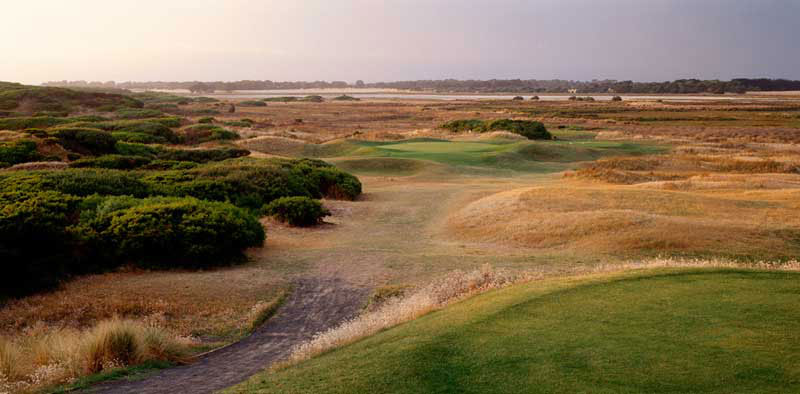
Away from it all: The short thirteenth.
Barwon’s best holes are spent by the time the golfer reaches the fourteenth tee. With a stronger finish, the authors would gladly place it against all but the very best links course in the United Kingdom. Those curmudgeons who say the course plays too easy as it measures only 6,300 yards miss the point. Par is a tight seventy and the wind keeps you honest, but the big picture is one of enjoyment.
The Clubhouse with its rooms to accommodate visitors is adjacent to the eighteenth green and offers a sense of graciousness from days gone by. Many Melbournians who grew up on Kingston Heath or Royal Melbourne look forward to their annual three day retreat to Barwon with as much relish as any trip of the year. Who can blame them? Such is the quality and charm of Barwon Heads, the authors would rather play here than half of the better known Sandbelt courses.
The authors wish to acknowledge and thank David Scaletti for his photographs. David’s website can be found at; http://www.sportscapes.com
The End



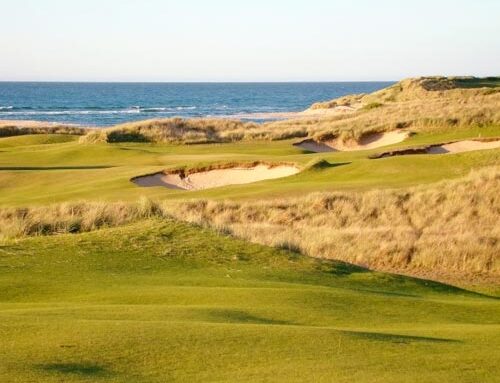
![Royal Melbourne (West) [2017]](https://golfclubatlas.com/wp-content/uploads/2016/03/RME16gb-500x383.jpg)

